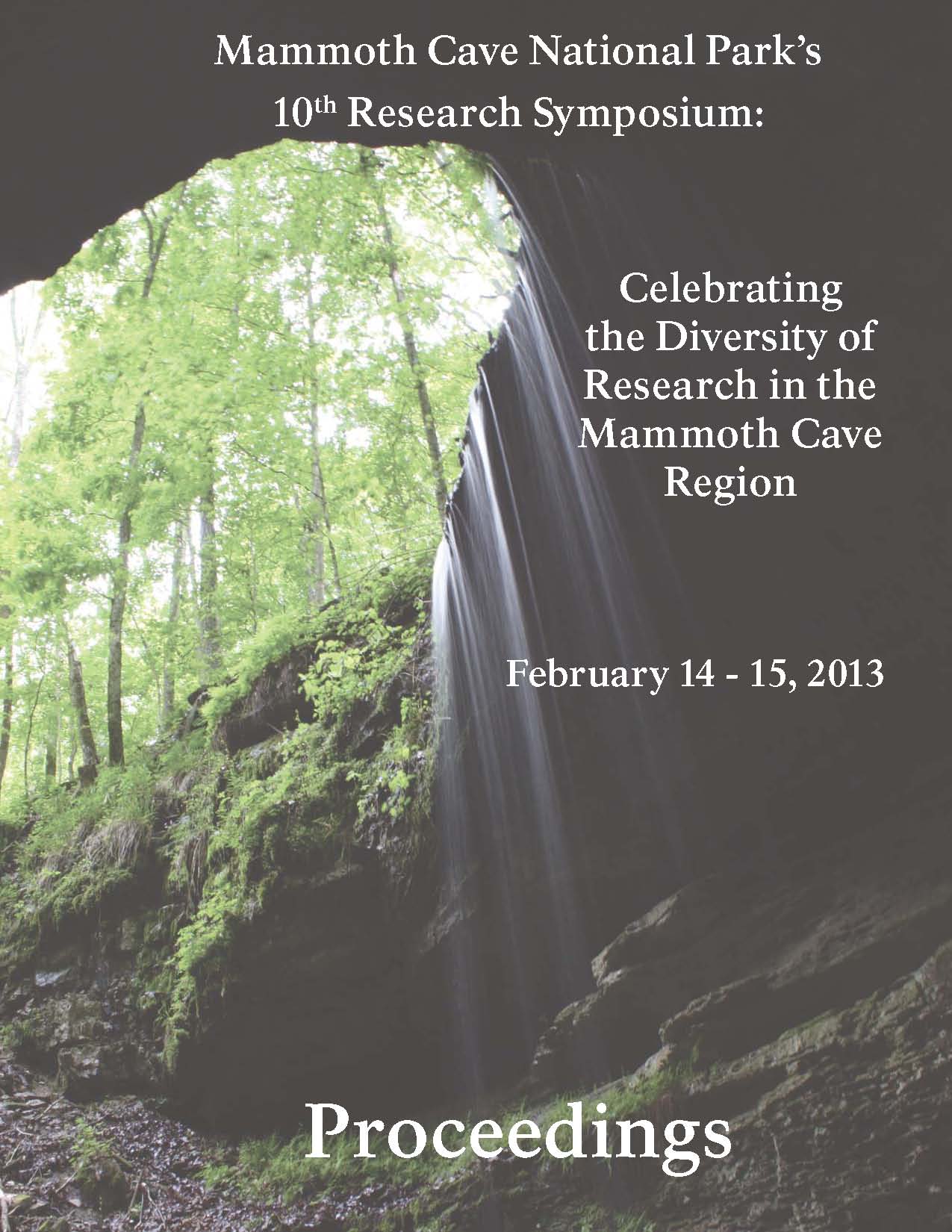Start Date
14-2-2013 2:50 PM
Description
Muskrats (Ondatra zibethicus) are known to prey on freshwater bivalves (mussels and clams) and can negatively impact imperiled mussel species. However, factors that infl uence muskrat predation on bivalves are poorly understood. We evaluated the feeding ecology of muskrats at Mammoth Cave National Park, Kentucky by using stable isotope analysis of muskrat hair samples and by monitoring bivalve shell deposition at muskrat middens. Bayesian mixing-model analysis of stable isotope δ15N and δ13C ratios revealed that the median muskrat biomass derived from bivalves was 51.4% (5th and 95th percentiles were 39.1 to 63.4%, respectively), a much higher dietary proportion than previously reported. Shell depositions by muskrats at middens decreased with the availability of seasonal emergent vegetation, suggesting that the consumption of animal matter is in response to a scarcity of plant foods. Our results add to the growing body of evidence that muskrats have the potential to impact mussel population growth and recovery in some environments.
Recommended Citation
Asmus Hersey, Kimberly; Clark, Joseph D.; and Layzer, James B., "Contribution of Freshwater Bivalves to Muskrat Diets in the Green River, Mammoth Cave National Park, Kentucky" (2013). Mammoth Cave Research Symposia. 15.
https://digitalcommons.wku.edu/mc_reserch_symp/10th_Research_Symposium_2013/Research_Posters/15
Included in
Animal Sciences Commons, Forest Sciences Commons, Geology Commons, Hydrology Commons, Other Earth Sciences Commons, Plant Sciences Commons
Contribution of Freshwater Bivalves to Muskrat Diets in the Green River, Mammoth Cave National Park, Kentucky
Muskrats (Ondatra zibethicus) are known to prey on freshwater bivalves (mussels and clams) and can negatively impact imperiled mussel species. However, factors that infl uence muskrat predation on bivalves are poorly understood. We evaluated the feeding ecology of muskrats at Mammoth Cave National Park, Kentucky by using stable isotope analysis of muskrat hair samples and by monitoring bivalve shell deposition at muskrat middens. Bayesian mixing-model analysis of stable isotope δ15N and δ13C ratios revealed that the median muskrat biomass derived from bivalves was 51.4% (5th and 95th percentiles were 39.1 to 63.4%, respectively), a much higher dietary proportion than previously reported. Shell depositions by muskrats at middens decreased with the availability of seasonal emergent vegetation, suggesting that the consumption of animal matter is in response to a scarcity of plant foods. Our results add to the growing body of evidence that muskrats have the potential to impact mussel population growth and recovery in some environments.


Comments
Abstract only